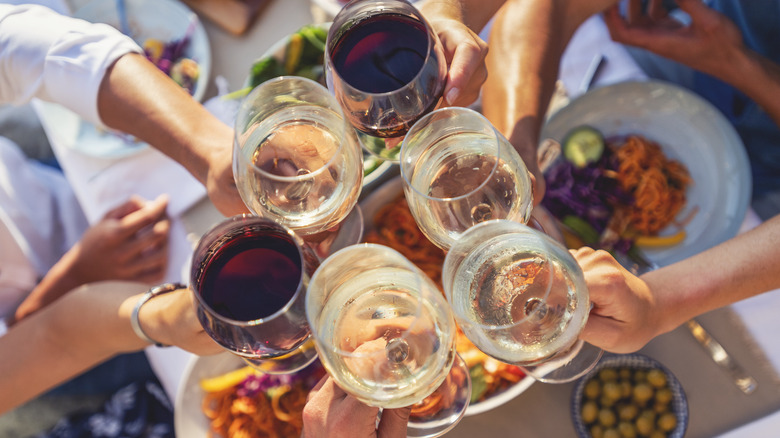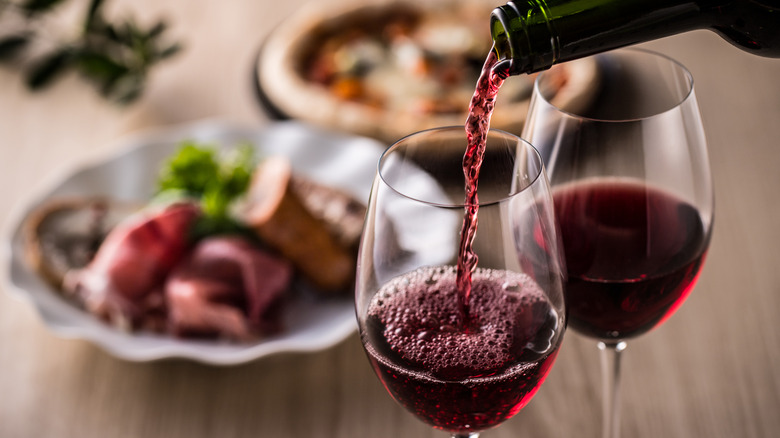When Pairing Wine, The Temperature Of Food Matters As Much As Flavor
Fresh-off-the-grill steak and Cabernet Sauvignon? Yes, please. Potato chips and Champagne? Absolutely. Oysters and Chardonnay? Sign us up! When it comes to choosing the perfect vino to accompany your meal, there is a crucial factor that often goes overlooked. The temperature of your food can have just as much influence on the pairing as the flavor itself. Ramon Manglano, Wine Director of The Musket Room, a Michelin-starred restaurant in New York City, emphasized this point in a discussion with Mashed.
One fundamental principle Manglano shared is the preference for drinking white wine while eating cold dishes — think salads, sandwiches, cheese, gazpacho, and sushi. The reason is simple: Coldness tends to dull flavors, making it essential to choose a wine that complements, rather than competes with, the dish's ingredients. A refreshing Chardonnay or a crisp Sauvignon Blanc can be excellent choices to go with a cool seafood salad, as their lively acidity can help to balance the food's mildness. However, as Manglano suggests, "combine [cold dishes] with a side dish that isn't as cold because it levels out with your wine combination." For instance, sautéed, well-seasoned vegetables can provide a lovely contrast to smoked salmon.
Drinking wine with the right dish makes all the difference
Of course, this philosophy also matters a great deal when pairing wines with warm or hot dishes. For example, if you're indulging in a hearty beef stew or a succulent roasted lamb, the ideal wine choice would typically be a full-bodied red, like a Cabernet Sauvignon or a Merlot. The depth of the wine magnifies the fare's richness.
Moreover, the temp of the wine itself plays a major role. As a general rule of thumb, it's best to serve white wine chilled (between 49 and 55 degrees Fahrenheit) and red wine slightly warm (between 62 and 68 degrees Fahrenheit). Why? Because, when sipped, the wine's natural notes and aromas are more perceptible. That said, making wine too cold can mute its subtleties, and letting it get too warm can make it taste overly alcoholic. At the end of the day, knowing the importance of temperature can help you strike a harmonious balance between what's on your plate and what's in your wine glass.

